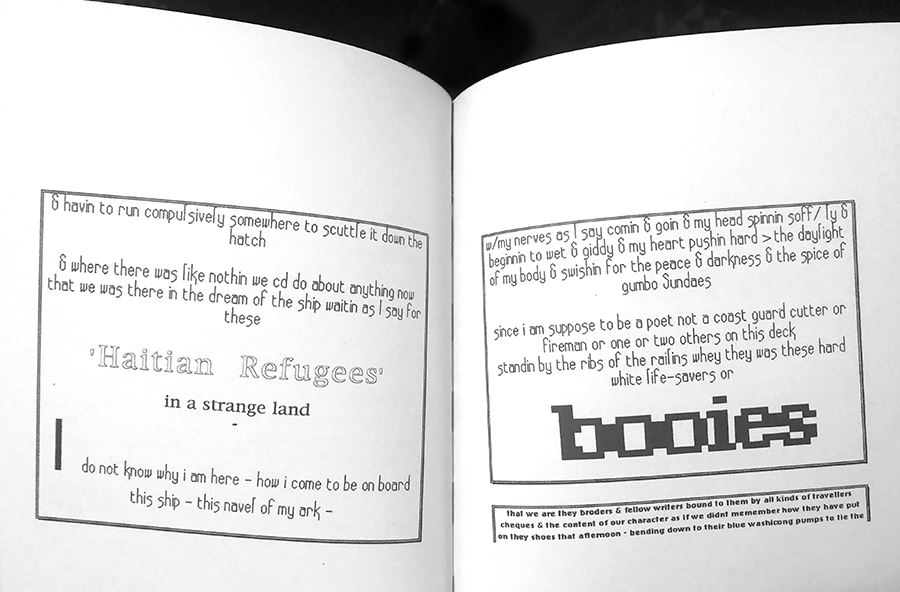Note: This post is in direct response to the theme of Marianne Dages’ last entry on this blog, “We’re All Water.”
~~~~~~~~~~~~~~~~~~~~~~~~~~~~~~~~~~~~
There’s a rhythm to the blinking cursor, a nagging persistence, goading me to continue.
Waves crash ashore, the tides ebb and flow with parallel reliability.

~~~~~~~~~~~~~~~~~~~~~~~~~~~~~~~~~~~~
I often turn to writers’ reflections about the writing process for language and insight into my own artistic processes. While many visual artists are able to articulate their motivations and engagements, I embrace the challenge to run a sort-of real time Find and Replace through these literary-focused pieces. Mentally shifting text to images or words to pictures allows the language to hold its greater definition(s): composition, draft(ing), edit(or), (pulling a) proof, (the mark-making of) mark-up, public(ation).
This exercise is a component of my research on the fluidity between digital and analog modes of production and publishing, as a means to read, see, view, distribute, and handle this nebulous thing called book art. I approach that metaphor of fluidity rather straightforwardly in recent projects originating from digital video captures of paper in/around/through water and in exploring the concept of tidalectics and the work of its originator, poet Kamau Brathwaite. Likening the hierarchical history of landmasses to colonialism, tidalectics considers the interconnectedness of humanity through the viewpoint of oceanic understanding.

To view the world through this Caribbean writer’s lens provides an incredible perspective shift away from a white/Eurocentric convention. A perspective shift is what engaging book art does for me - challenging a preconception in form, structure, or content about what a book is (or can be!) and how a publication does (or can!) function.
Tidalectics co-opts the vocabularies of hydrology and oceanology; Brathwaite embraces the ocean tides as a means to provide rhythm for his poetic delivery. In an anecdote during a poetry reading, Brathwaite explains how his literary education in Barbados limited his ability to express himself. He likens the British military marching he witnessed at a parade to the narrow and unrelatable constraint of iambic pentameter. Whereas later in the same parade, he watched his aunts make their way down the route, far enough away from the military band to hear the drums beat, spinning in circles to their own rhythms. These “circles,” swirling as oceanic waters in tide pools, allow Brathwaite to create his own writing structures and systems outside of the Western canon. As opposed to the ability for a reader to follow the standard structure of poems written in iambic pentameter, Brathwaite’s must deliver the poems himself. The orations swell, undulating in volume, pacing, and melodic range.

Screen captures made by the author from a YouTube channel, which was digitally transferred from a VHS recording evidenced by artifacts of tracking, creating visual waves across Brathwaite’s gesturing arms

Excerpt from Dream Haiti series by Kamau Brathwaite as reproduced in the anthology, Tidalectics
Visually, Brathwaite’s poems utilize an inventive approach to standard early word processing software which he dubbed “Sycorax video style.” Sycorax for the name he gave to his Macintosh computer, and video style as a reference to the way in which his writing input would appear, flowing as a scroll on the video computer screen display. Referring to the Brathwaite 1994 collection Dreamstories, Nicholas Laughlin explains the poems “[deploy] a variety of typefaces and styles, unconventional syntax and punctuation, and sometimes idiosyncratic spellings. ‘Sycorax video style’ cannot properly be quoted; it must be visually reproduced.”
Of course, this notion that a work “must be visually reproduced” is familiar to visual artists, especially book artists, who struggle to accurately represent works via photographic and written documentation. Similarly, the aural experience that Brathwaite provides in his readings is an additional sensory element in which he controls how an audience experiences his work. I use Brathwaite as a case study of an artist, a poet, who demands certain parameters for his work to be understood and framed. How can the book be best represented for promotion? For publication? What if it was designed only to be a viewed on a screen? What if it is a tactile, printed, bound object alongside a digital component? What does it mean to view a physical book work on a screen? I think of the ways that I have accessed Kamau Brathwaite’s works to gain this appreciation: reproduction in print, written description, digital video, online images. These are the very ways book artists benefit from opportunities of a multimodal, fluid approach to digital publishing: sharing, distributing, and studying of book works.
References
Hessler, Stefanie. Tidalectics: Imagining an Oceanic Worldview Through Art and Science. London, England: TBA21-Academy. Cambridge, Massachusetts: The MIT Press, 2018.
Kirschenbaum, Matthew G. Track Change: A Literary History of Word Processing. Cambridge, Mass: The Belknap Press of Harvard University Press, 2016.
Laughlin, Nicholas. “Notes on Videolectics.” The Caribbean Review of Books, May 2007. http://caribbeanreviewofbooks.com/crb-archive/12-may-2007/notes-on-videolectics/.
Cultura América Latina y el Caribe. “Kamau Brathwaite.” Online video clip. YouTube. YouTube, 30 July 2015. Web. 7 November 2018.
Leah Mackin is a visual artist and educator, often working collaboratively on performative publishing projects. She is the current Victor Hammer Fellow at the Wells Book Arts Center and founder of the INTERNET ART BOOK FAIR.

